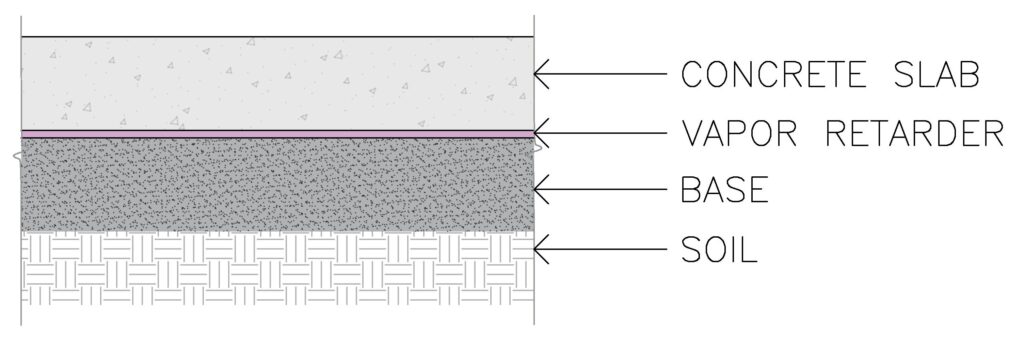The code requirements for vapor barriers, also known as vapor retarders, in residential construction can be found in Section R506.2.3 of the 2019 International Residential Code (IRC). But before we get into the code requirements for vapor barriers, let us understand what a vapor barrier is.
What is a Vapor Barrier?
A vapor barrier is basically a thin layer of impermeable material which is used to prevent moisture from passing through it.
As mentioned before the code uses the term vapor retarder. While most people use the term vapor barrier, these two terms are basically the same thing and the terms are used interchangeably.
In order to stay consistent in this article, I will be referring to vapor barriers since this term is commonly used.
Now a “barrier” might sound like it completely blocks moisture, which is probably why the code uses the term “retarder” since this is a more technical term.
Without getting into too much detail, the code classifies vapor retarders into three different classes. Each class has a rating that measures the materials ability to limit the amount of moisture that passes through it.
The different levels of vapor performance can vary on the location of the application.
Is a Vapor Barrier Required Under a Concrete Slab?
Yes, Section R506.2.3 of the IRC specifies that a 6-mil polyethylene or other approved vapor retarder with joists lapped not less that 6 inches shall be placed between the concrete floor slab and the base course or prepared subgrade.

Why is a Vapor Barrier Required?
Concrete itself is porous meaning that moisture can travel through it. Most of the time concrete slabs are bare and not sealed meaning water vapor will pass through the slab.
When flooring material, such as tile, linoleum, or wood flooring, is placed over a concrete slab, the moisture can be trapped between the slab and the flooring material as the water vapors travel through it.
This ultimately can cause an issue down the line such as the flooring material eventually loosening, buckling, or blistering over time. Not to mention other problems related to the quality of the indoor environment.
This is why introducing a vapor barrier under the slab can minimize many moisture related problems. When a vapor barrier is not punctured during construction and is properly lapped when installed, it can provide significant protection.
An important thing to note here is that other than the thickness of the material, the code in this section does not provide a minimum vapor barrier classification for this application.
When is a Vapor Barrier Not Required?
There are 4 exception to when a vapor barrier is not required under a concrete slab. These exceptions are as follows:
- For garages, utility buildings and other unheated accessory structures.
- For unheated storage rooms having an area of less than 70 square feet and carports.
- For driveways, walks, patios and other flatwork not likely to be enclosed and heated at a later date.
- Where approved by the building official, based on local site conditions.
Under these 4 exceptions, a vapor barrier is not required.
How Thick must a Vapor Barrier be?
Although this section of the code does not specify the classification of the vapor barrier, it does specify the thickness. A 6-mil polyethylene or other approved vapor retarder shall be provided under a concrete slab.
A 6-mil barrier basically means the material is 0.006 inch thick. This might not seem that thick but it is the minimum protection necessary to reduce the chances of water vapor travelling through it.
Moisture Protection for Existing Concrete Slabs
How do you install a Vapor barrier for an existing concrete slab?
Sometimes you might have a garage that you are converting into a living space or an existing structure with no vapor barrier installed below the slab. What can you do to meet this vapor barrier requirement when the slab is already existing?
The code does not specify how to address such a scenario, however there can be alternative methods proposed that would meet the intent of the code given these existing conditions.
One option is a product that would be applied to the top of the concrete slab that would seal it from moisture. A popular one is know as RedGard, which can be used for various applications.
Below is a link to Amazon where you can purchase it or just read more about it.

This is just one of many products that can be used however this one is a popular one. The key is to make sure it is listed and tested for this application.
For more information regarding vapor barrier requirements, be sure to check out Section R506.2.3 of the 2018 International Residential Code (IRC).
.
* Reference Source – 2018 International Residential Code – [Buy on Amazon]
